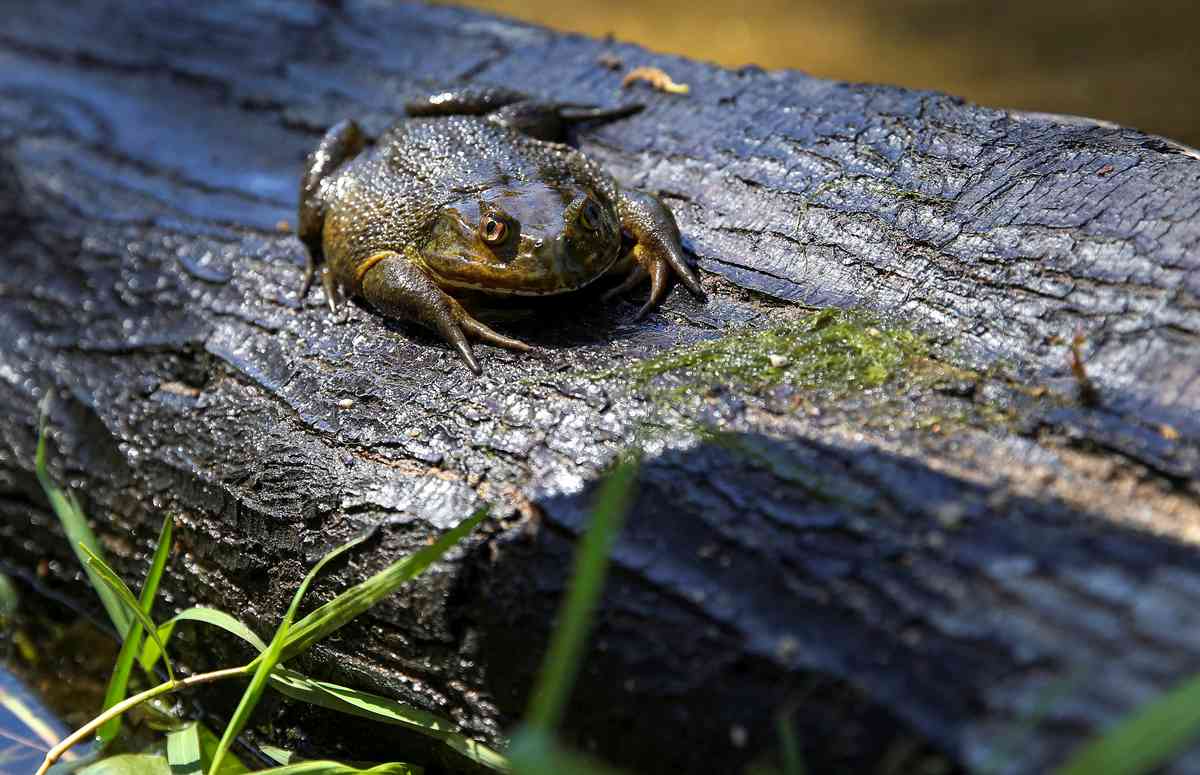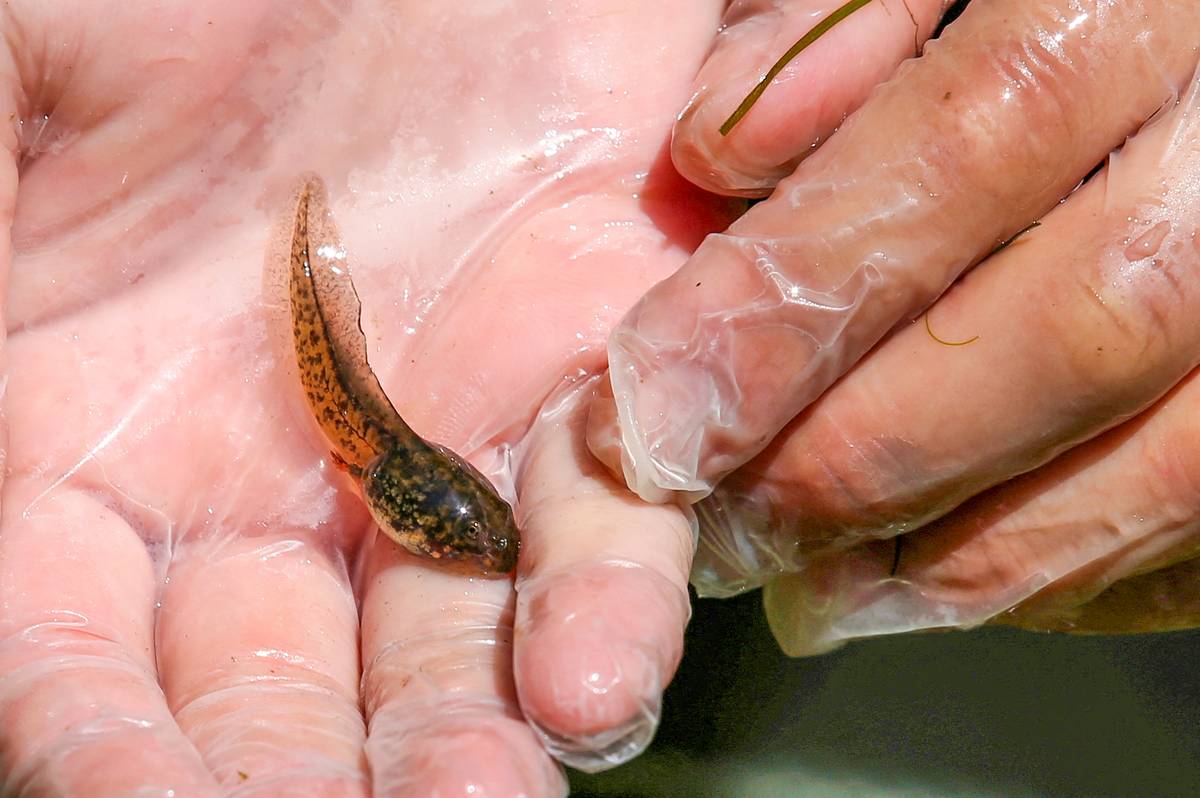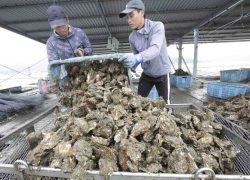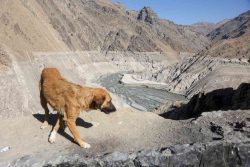

Left: A Chilean frog (Calyptocephalella gayi) is seen on a tree trunk in a wetland in the city of Quilpue, Chile, on Dec. 8. Right: An environmental researcher shows a Chilean frog tadpole after collecting it.
13:13 JST, January 9, 2025
SANTIAGO (Reuters) — A giant frog species that hopped alongside dinosaurs and is considered a “living fossil” is now losing ground in its native Chile as climate change and human intervention damage its habitat.
The Calyptocephallela gayi, or Helmeted Water Toad, is one of the largest frogs in the world, growing up to over 30 centimeters in length and weighing up to 1 kilogram.
The amphibian has seen little genetic variation for millions of years, but now its future is at risk, scientists say.
“It’s sad that a species that managed to coexist with dinosaurs, that managed to resist a mass extinction, is now threatened by human beings,” said Melissa Cancino, a vetinarian and founder of Proyecto Anfibia, a group dedicated to amphibian research and education in Chile.
The Helmeted Water Toad’s environment spans from the northern region of Coquimbo to the southern island of Chiloe, but its population is suspected to have declined by at least 30% since 1990 and it is listed as “vulnerable” on the International Union for Conservation of Nature’s (IUCN) Red List.
Factors such as climate change, habitat interruption, environmental decline and pollution have all caused the Helmeted Water Toad’s numbers to dwindle, Cancino said. Poor water and waste management have also threatened the frog’s environment.
Matias Faundez, another member of Proyecto Anfibia, has seen the habitat degradation first hand.
“This estuary runs through the whole city, and has plenty of illegal run-offs,” he said as he waded through a stream outside of Valparaiso. “Even so, the frog manages to survive.”
"Science & Nature" POPULAR ARTICLE
-

Genome Study Reveals Milestone in History of Cat Domestication
-

Big Leap in Quest to Get to Bottom of Climate Ice Mystery
-

Japan Set to Participate in EU’s R&D Framework, Aims to Boost Cooperation in Tech, Energy
-

Paws on Parade: Nairobi’s Dogs Dazzle at ‘Pawchella’
-

Japan’s H3 Rocket Failed in Latest Launch, Says Official
JN ACCESS RANKING
-

Tokyo Economic Security Forum to Hold Inaugural Meeting Amid Tense Global Environment
-

Keidanren Chairman Yoshinobu Tsutsui Visits Kashiwazaki-Kariwa Nuclear Power Plant; Inspects New Emergency Safety System
-

Imports of Rare Earths from China Facing Delays, May Be Caused by Deterioration of Japan-China Relations
-

University of Tokyo Professor Discusses Japanese Economic Security in Interview Ahead of Forum
-

Japan Pulls out of Vietnam Nuclear Project, Complicating Hanoi’s Power Plans

























